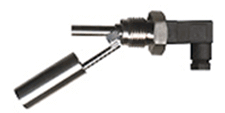Price
$2,203.00 CAD
Stock
13 In Stock
The reed switch relies on two basic scientific principles namely: buoyancy and magnetism.
Buoyancy causes the float (which contains a magnet) to rise with the liquid and magnetism helps open and close the switch.
Since this product's this product has been introduced to the market, it has seen significant improvement and advances with regards to convenience, safety and lowering costs.
The float switches are extremely compact, simple and are easy to install on any small locations.
These switches are not affected by electrical interference and can withstand chemicals, high temperatures and pressures if the correct material of float switch is selected.
Liquid Properties and Floats: The switch's float should always have a specific gravity (SG) less than the liquid that holds the float. (SG float < SG liquid) When the liquid level rises the float will rise up due to its buoyancy.
The float's upward movement will actuate the switch and close the circuit. Different float materials can be used to ensure the float's SG level is less than the liquid. (Water's SG level is 1 while gasoline SG levels tend to be less than 1).
Because the float switches are activated by the magnetic field inside the float, make sure the liquid contains no iron traces or substances that can induce magnetic interference.
Specifications
Brand
Approvals & Certifications
- ABS
- BV
- CE
- DNV
- GL
- LR
- UL
BSP Connection
- 1/2” BSP Male
Cable Material
- Polyurethane
- PVC
- Silicone
- Teflon
- XLPE
Current
- Carry Current, Max.
Electrical - Free Leads
- 22 AWG
- 24 AWG
Electrical Rating
- 0.5 A at 240 Vac / 200 Vdc, 50 W
Enclosure, Body Material
- 304 Stainless Steel
- 316L Stainless Steel
Fluid Specific Gravity
- 0.75
- 0.92
Maximum System Pressure
- psi: 72.52 (kPa: 500, bar: 5)
Media
- Chemicals
NPT Connection
- 1/2” (15A) Male NPT
Operating Temperature
- -20° to 200° C (-4° to 392° F)
PT/PF/PS (JIS) Connection
- 1/2” (15A) PF Male
- 1/2” (15A) PT Male
Sensor, Probe Style
- Float
Switch Type
- SPST
